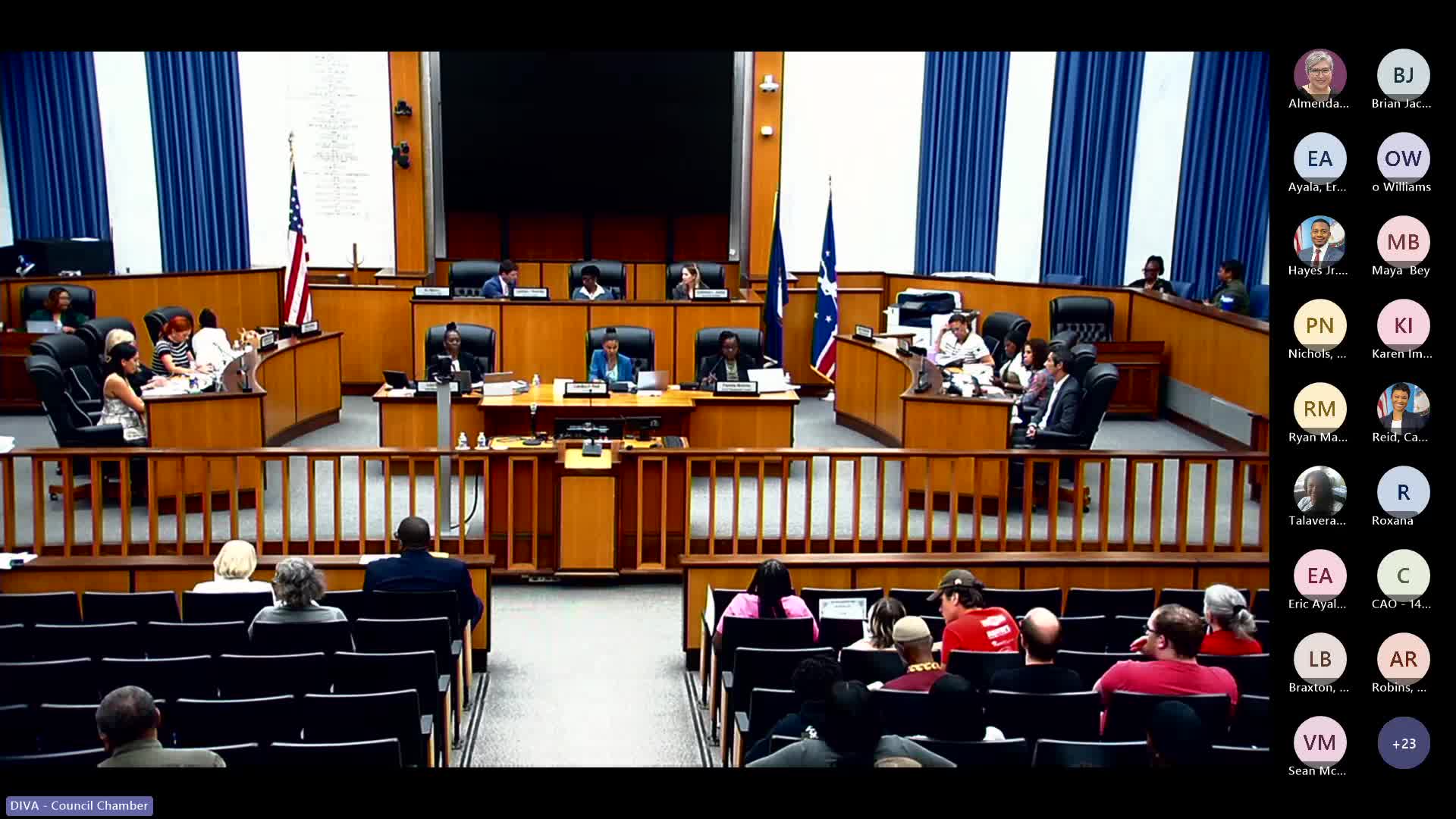City Council Discusses New Zoning Ordinance for Tobacco and Hemp Retail Sales
July 29, 2025 | Richmond City (Independent City), Virginia
This article was created by AI summarizing key points discussed. AI makes mistakes, so for full details and context, please refer to the video of the full meeting. Please report any errors so we can fix them. Report an error »

In the heart of Richmond City Hall, the air buzzed with anticipation as city officials gathered for a formal council meeting on July 28, 2025. Among the key discussions was a proposed ordinance that could reshape the landscape of retail tobacco and hemp sales in the city.
Kim J. Bong, the director of planning and development review, took the floor to present the ordinance, which aims to establish a clear definition for retail sales of tobacco and hemp. This initiative seeks to categorize these sales within the city’s zoning ordinance, allowing them as a conditional use in select zoning districts. The proposal is not just about regulation; it introduces a framework that prioritizes community safety by imposing significant restrictions on where vape shops can operate.
Under the new guidelines, these establishments would need to maintain a buffer of at least 1,000 feet from sensitive areas such as residential neighborhoods, schools, parks, and places of worship. This distance is designed to minimize potential impacts on community health and well-being, reflecting a growing awareness of the implications of tobacco and hemp sales.
Bong noted that the amendment was prompted by the Planning Commission's request to align local definitions with those outlined in the Code of Virginia. Currently, the ordinance references state definitions, but there are plans to develop a more tailored approach in future amendments, ensuring that Richmond's zoning code accurately reflects local needs and concerns.
As the meeting progressed, it became clear that this ordinance is just one piece of a larger puzzle in Richmond's ongoing efforts to balance economic development with public health. The council's decision to postpone a vote until a later date indicates a commitment to thorough consideration of the implications of such regulations.
With the future of retail tobacco and hemp sales hanging in the balance, Richmond City Council is poised to make decisions that could significantly impact the community, highlighting the delicate interplay between commerce and community welfare.
Kim J. Bong, the director of planning and development review, took the floor to present the ordinance, which aims to establish a clear definition for retail sales of tobacco and hemp. This initiative seeks to categorize these sales within the city’s zoning ordinance, allowing them as a conditional use in select zoning districts. The proposal is not just about regulation; it introduces a framework that prioritizes community safety by imposing significant restrictions on where vape shops can operate.
Under the new guidelines, these establishments would need to maintain a buffer of at least 1,000 feet from sensitive areas such as residential neighborhoods, schools, parks, and places of worship. This distance is designed to minimize potential impacts on community health and well-being, reflecting a growing awareness of the implications of tobacco and hemp sales.
Bong noted that the amendment was prompted by the Planning Commission's request to align local definitions with those outlined in the Code of Virginia. Currently, the ordinance references state definitions, but there are plans to develop a more tailored approach in future amendments, ensuring that Richmond's zoning code accurately reflects local needs and concerns.
As the meeting progressed, it became clear that this ordinance is just one piece of a larger puzzle in Richmond's ongoing efforts to balance economic development with public health. The council's decision to postpone a vote until a later date indicates a commitment to thorough consideration of the implications of such regulations.
With the future of retail tobacco and hemp sales hanging in the balance, Richmond City Council is poised to make decisions that could significantly impact the community, highlighting the delicate interplay between commerce and community welfare.
View full meeting
This article is based on a recent meeting—watch the full video and explore the complete transcript for deeper insights into the discussion.
View full meeting
